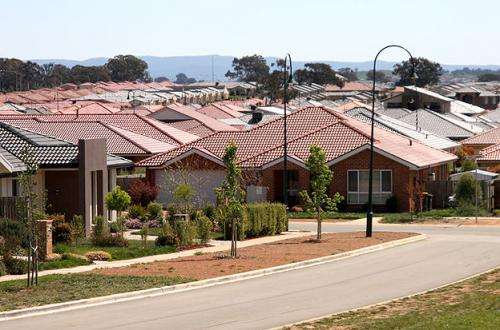Housing stress among low-income households - from mortgages and rental costs - is one of the issues considered in the latest update from the Public Health Information Development Unit. Credit: University of Adelaide
People in Australia's most disadvantaged areas experience lower attendance at high school, greater financial stress and a higher risk of bowel cancer.
These are some of the findings from new figures released today by University of Adelaide researchers.
The Public Health Information Development Unit, based at the University's School of Social Sciences, provides regular updates about various social indicators on its website: www.publichealth.gov.au
Today's update provides new data about:
- participation in full-time secondary education of young people at age 16;
- housing stress (households under mortgage stress and those under rental stress);
- participation and outcome measures in the National Bowel Screening Program;
- estimated resident populations as at 30 June 2011; and
- number of home and community care services and clients.
The graphics show variations between the most well-off and most disadvantaged areas in each capital city, across each State and Territory, and by a remoteness classification.
"In producing this information, we hope to raise awareness of the inequities that exist for many people in our communities, and to provide a basis for working towards a better future for them," says the Director of the Public Health Information Development Unit, Associate Professor John Glover.
High school participation
"There is a notable decline in participation of 16-year-olds in full-time secondary education as socioeconomic disadvantage increases," Mr Glover says.
"The participation rate of 16-year-old students from the most disadvantaged areas of Australia's capital cities is 14% below that of students from the most advantaged areas. In non-metropolitan areas, the participation of those from disadvantaged backgrounds is 12% less than those from well-off areas."
Mr Glover says these figures were reflected in University enrolments in 2010, with the most disadvantaged school leavers from capital cities enrolling at two thirds (67%) the rate of those from the most advantaged areas. In the non-metropolitan areas, the proportion was 70%. (This data excludes enrolments through the Queensland Tertiary Admissions Centre.)
"These figures suggest that more needs to be done to encourage participation at high school among 16-year-olds from lower socioeconomic backgrounds. The education they receive - especially if it leads to a university education - can be critical in helping to break the cycle of disadvantage experienced in their family," Mr Glover says.
Housing stress
Today's figures also reveal how many people in low-income households experience financial stress as a result of their housing costs. These are based on figures from the 2011 Census.
Low income households in Australia's capital cities who were under financial stress as a result of mortgage repayments represented one tenth of all households.
But low income households do not experience the same level of financial stress everywhere, Mr Glover says.
"The figures show that if you live in a low income household in a well-off area, you're much less likely to experience financial stress as a result of mortgage repayments. Those who live in the most disadvantaged areas are more than twice as likely to experience mortgage stress as their low-income counterparts in well-off areas.
"This can lead to concentrations of people in financial difficulty and therefore enormous stress because of it," he says.
In the rental market, one quarter of those in low-income households in the capital cities were under financial stress from rental costs.
National Bowel Screening Program
Today's data shows that those living in the most disadvantaged areas of Australia's capital cities also have much poorer outcomes in the National Bowel Screening Program, with 49% more people in these areas having blood in their samples, compared with those living in the most advantaged areas.
"There is also a 13% lower participation rate in the program by people from disadvantaged areas, placing them at greater risk of bowel cancer," Mr Glover says.
More information: The full range of data - including interactive and comparative atlases and graphics - can be found on the Unit's website: www.publichealth.gov.au
Provided by University of Adelaide


















